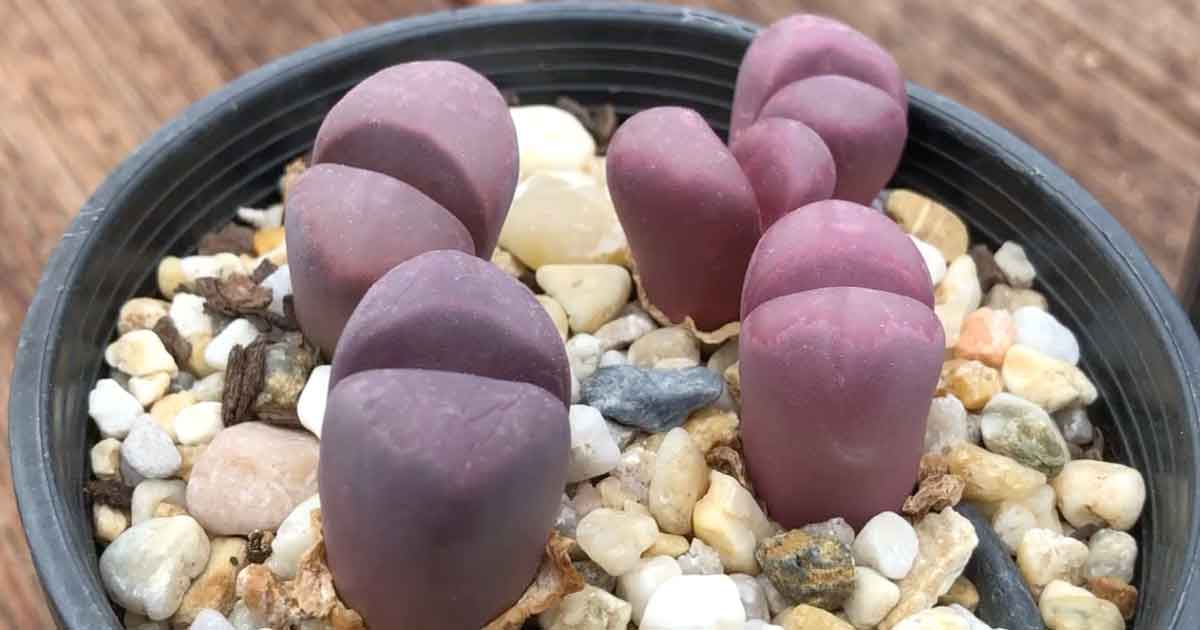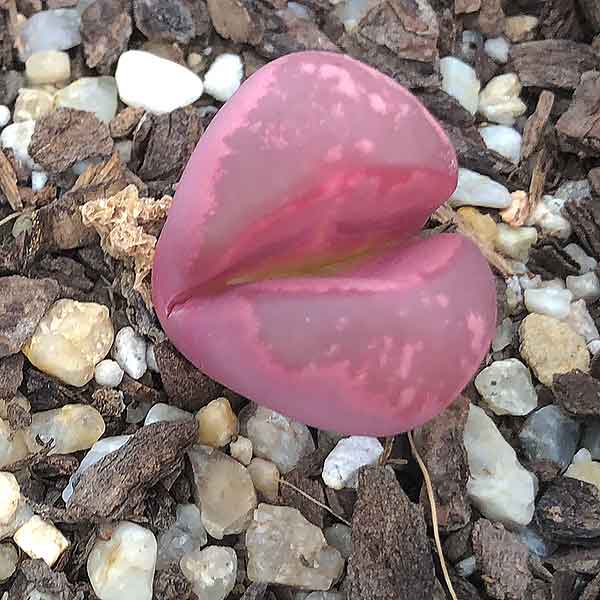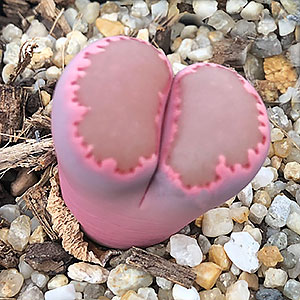
One of the Lithops most widely used in hybridisation is Lithops optica ‘Rubra’. This is just one of a number of Lithops optica varieties identified by Cole. One of the last to flower, like many Lithops varieties it is varied in appearance with some varieties having much more defined marking than others.

From Namibia, you will find green and brown L.optica types, however it is C81A that is the red form and the most widely sought after.
Sato’s Violet is one such form and this is a hybrid between L.salicola and L.optica ‘Rubra’. And this one was bred in Japan by Mr Tony Sato who is perhaps better known for breeding Astrophytums. This particular plant is also known as ‘Bacchus’.
Other red lithops come from different species including the wonderful ‘Top Red’ (Lithops karasmontana ssp. karasmontana v. karasmontana ‘Top Red’) bred by Mr Yasuhiko Shimada, one of the most famous names in the world of Lithops.
Lithops optica ‘Rubra’ Care

- Temperature Range
Best kept in a summer range of 73F (23c) – 77F (25C). At over 30C for long periods the plant can go into a sort of dormancy.
In winter, protect from frosts and avoid freezes, ideally no lower than 6 -8C at night. - Growing medium (Substrate)
A well drained soil or potting mix is essential. See our potting mix for lithops video.
Also use a deep pot, as Lithops do have a deep root system including a tap root of sorts. - Watering
In general, water only when the growing medium dries out.
When the plant is dividing, shedding it’s old leaves it’s time to cut back on watering to avoid problems.
If you notice shrinking or shrivelling of the top skin, then a little water is requires.
The best time to wear is in the morning, this gives the plant and soil a chance to dry a little during the day time. - Fertiliser
You only need to add fertiliser when repotting, once every 2 – 3 years. Use a low nitrogen fertiliser. - Propagation
This is done from seed, or division of clumps.

